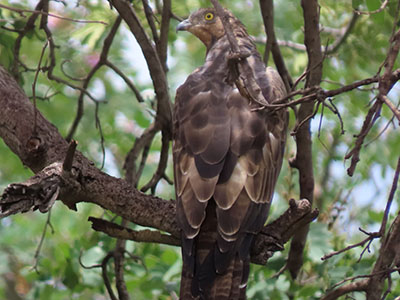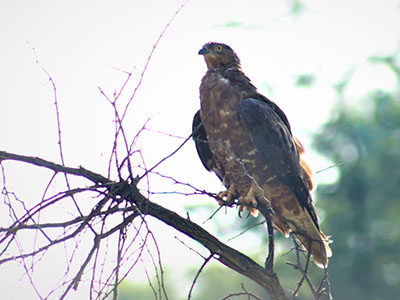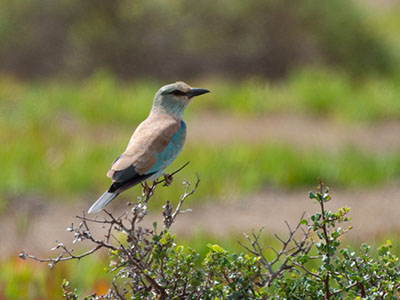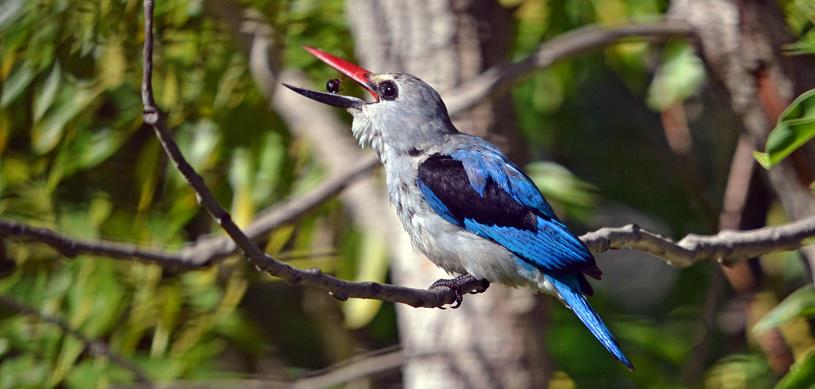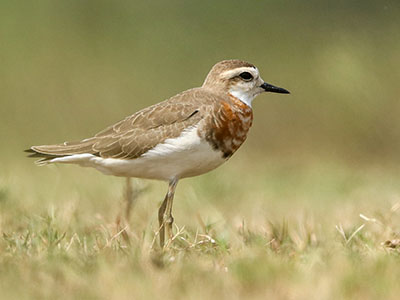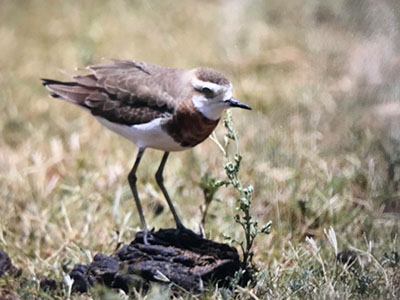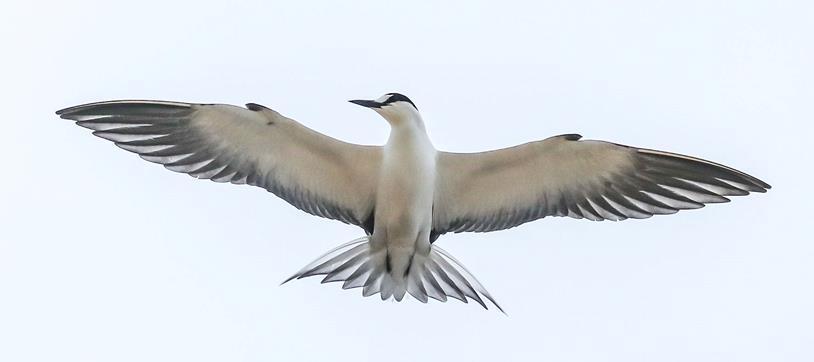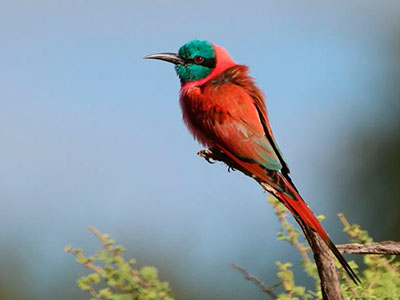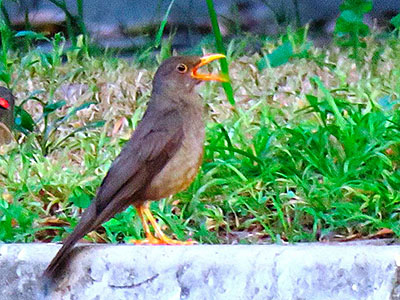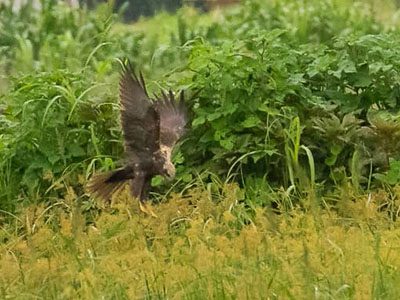SA Rare Bird News Report - 22 January 2021
Trevor Hardaker
| |||||||||
| |||||||||
S O U T H E R N A F R I C A N R A R E B I R D N E W S R E P O R T | |||||||||
|
|
| |||||||
This is the Southern African Rare Bird News Report issued at 10h45 on Friday, 22 January 2021.
Information has been gleaned from various websites, email groups as well as from individual observers who have passed on their sightings. This report cannot be taken as being totally comprehensive as it is based only on information made available at the time of writing. All bird sightings reported here are reported in good faith based on information as provided by the observers. Any inaccuracies are totally unintentional and the writer cannot be held liable for these.
None of the records included in this report have undergone any adjudication process with any of the subregion’s Rarities Committees, so inclusion in this report does not constitute any official confirmation of the particular record. Observers are still encouraged to make the necessary submissions accordingly.
For those who may have only joined the group recently and are interested in finding out what has been seen in the past, previous reports can be viewed at http://groups.google.co.za/group/sa-rarebirdnews |
| SARBN is proud to be associated with the following brands: | |||||||
| |||||||||
| |||||||||
| |||||||||
|
|
| |||||||
| |||||||||
|
| ||||||||
PLEASE CONSIDER FOLLOWING ME ON SOCIAL MEDIA BY CLICKING ON THE LINKED ICONS BELOW: | |||||||||
|
| ||||||||
|
| ||||||||
| |||||||||
|
| ||||||||
Sorry that I was not able to get a formal report out last night, but here is one just to catch up on what has transpired in the last few days. As usual, let’s start with a few scarcity records first…
EUROPEAN HONEY BUZZARD:
· One in a garden in Centurion (Gauteng) yesterday. · One at Cecelia Forest (Western Cape) on Wednesday. · One in a garden in Westdene, Bloemfontein (Free State) on Wednesday. · One in Victoria Falls (Zimbabwe) on Wednesday. · One near Roodeplaat Dam (Gauteng) on Sunday. | |||||||||
|
| ||||||||
|
| ||||||||
European Honey Buzzard in Victoria Falls © Colin Baker | European Honey Buzzard near Roodeplaat Dam © Hanlie Gõttsche | ||||||||
|
| ||||||||
On to the rest of the news and, starting in the Western Cape, perhaps the biggest surprize was the discovery of a WOODLAND KINGFISHER on the farm Jonkersrivier, between Worcester and Villiersdorp, at -33.854, 19.374 yesterday which is still there this morning. This seems to be only the second ever record for the province (there is an old record from the Garden Route) of this well out of range species. What is even more interesting is that this latest bird does not appear to be of the race cyanoleuca which is the race that we normally get in Southern Africa as it lacks the black wedge behind the eye. It seems to be of the nominate race senegalensis which is perhaps an even more significant record in a local context as it would point to a bird from much further north in Africa that has really overshot its migration quite significantly.
Elsewhere in the province, the FRANKLIN’S GULL was still on Pan P2 at Strandfontein Sewage Works on Wednesday and the RED-NECKED PHALAROPE was still on Pan S2 there on Tuesday while, up on the west coast, both the AMERICAN GOLDEN PLOVER and RED-NECKED PHALAROPE were still at Kliphoek Salt Pans in Velddrif yesterday and a BROWN SNAKE EAGLE was seen at the West Coast Fossil Park on Sunday. De Hoop Nature Reserve produced 2 EUROPEAN ROLLERS on Tuesday, a EURASIAN GOLDEN ORIOLE was found east of Riviersonderend at -34.122, 19.985 on Tuesday, a MARSH WARBLER was located at the start of the Brown-hooded Kingfisher Trail in Wilderness at -33.983, 22.651 yesterday and there was also still a GREAT EGRET and a LESSER FLAMINGO present at Beaufort West Sewage Works on Tuesday. | |||||||||
|
| ||||||||
|
| ||||||||
Brown Snake Eagle at West Coast Fossil Park © Nigel McDonald | European Roller at De Hoop Nature Reserve © Hanneke Fourie-Benneke | ||||||||
|
| ||||||||
| |||||||||
Woodland Kingfisher on Jonkersrivier farm © Philna de Villiers | |||||||||
|
| ||||||||
In the Eastern Cape, many twitchers breathed a sigh of relief when the SOOTY GULL was relocated at Kei Mouth on Wednesday and it continued to perform there yesterday while the PECTORAL SANDPIPER was also still there yesterday. Both the PACIFIC GOLDEN PLOVER and GREATER SAND PLOVER remained on in Hamburg yesterday, a WHITE-BACKED VULTURE was seen on Sibuya Private Game Reserve this morning, a single BLUE-CHEEKED BEE-EATER was found at the sea end of the Cerebos track to Schelmhoek at -33.734, 25.796 on Wednesday and at least one LESSER SPOTTED EAGLE was seen at the composting facility at Komga on Monday. | |||||||||
|
| ||||||||
|
| ||||||||
Sooty Gull at Kei Mouth © Albert McLean | Sooty Gull at Kei Mouth © Diane McLean | ||||||||
|
| ||||||||
| |||||||||
Pacific Golden Plover at Hamburg © Albert McLean | |||||||||
|
| ||||||||
|
| ||||||||
Greater Sand Plover at Hamburg © Albert McLean | Lesser Spotted Eagle at Komga © Garth Shaw | ||||||||
|
| ||||||||
Moving up the coast into Kwazulu Natal, a RUFOUS-BELLIED HERON was seen at the Mphate River bridge on the Western Shores of iSimangaliso Wetland Park at -28.298, 32.383 on Tuesday, the SOOTY TERN was still at the St Lucia estuary on Wednesday as many as 12 CASPIAN PLOVERS were still at Mpempe Pan yesterday and 5 TEMMINCK’S COURSERS were also reported there on Wednesday and the SOOTY FALCON was still at Mbazwana until at least Tuesday. | |||||||||
|
| ||||||||
|
| ||||||||
Caspian Plover at Mpempe Pan © Tinus le Roux | Caspian Plover at Mpempe Pan © Sarel van der Westhuizen | ||||||||
|
| ||||||||
|
| ||||||||
Caspian Plover at Mpempe Pan © Michael Wright | Sooty Falcon at Mbazwana © Karin Wilson | ||||||||
|
| ||||||||
| |||||||||
Sooty Tern at St Lucia © Caroline Fox | |||||||||
| |||||||||
| |||||||||
Sooty Tern at St Lucia © Tinus le Roux | |||||||||
|
| ||||||||
The Free State continued to hold on to the MADAGASCAN CUCKOO which was still at Soetdoring Nature Reserve yesterday.
In Mpumalanga, a GREAT WHITE PELICAN was reported at Mkhombo Dam this morning while an AFRICAN OPENBILL was seen west of Leandra at -26.395, 28.875 on Wednesday.
Across in the North-west Province, a STRIPED CRAKE was heard again near the bridge over the Kgomo Kgomo floodplain on Tuesday morning.
Limpopo continued to stake its claim in the headlines with a COLLARED FLYCATCHER that was found at Island Camp at Limpokwena Nature Reserve near Alldays at -22.448, 28.879 on Wednesday and was still there yesterday while a SOOTY FALCON was found at Olifants River Game Reserve at -24.182, 31.038 on Wednesday. Perhaps the most exciting news from the province, the country and even the subregion, is also the most depressing because of the delay in getting it, but news has trickled through from 4 January 2021 of a NORTHERN CARMINE BEE-EATER found on a private farm on the southern bank of the Crocodile River, 3km from the confluence with Marico River, which then forms the start of the Limpopo River at -24.193, 26.892. The bird was only seen on that one day and was associating with White-fronted Bee-eaters at the time. Obviously, no further news has been received on it and we can only hope that it gets relocated somewhere else again. This is only the second record for the subregion with our first only having come 18 days prior to this in in the Buffalo Core area of Bwabwata National Park in Namibia. Could both records possibly refer to the same individual? Who knows really… | |||||||||
|
| ||||||||
|
| ||||||||
Collared Flycatcher at Limpokwena Nature Reserve © John Davies | Collared Flycatcher at Limpokwena Nature Reserve © Geoff Goetsch | ||||||||
|
| ||||||||
|
| ||||||||
Sooty Falcon at Olifants River Game Reserve © Shaun Dunlop | Northern Carmine Bee-eater along the Crocodile River © Dave de Vos | ||||||||
|
| ||||||||
Up in Namibia, a KAROO THRUSH was present since Saturday at the entrance to the Safari Hotel in Windhoek and was still there until at least Wednesday. The closest resident population is at Mariental, some 270 km to the south along the Fish River. Also still of interest, the YELLOW-THROATED LEAFLOVES were still in the gardens of Caprivi Houseboat Safari Lodge in Katima Mulilo on Tuesday.
And finally, in Zimbabwe, the popular MADAGASCAN CUCKOO was still present in Monavale in Harare yesterday while other records of interest included a WESTERN MARSH HARRIER near Marlborough Vlei in Harare on Wednesday, 2 BLACK-TAILED GODWITS at Kariba Bream Farm on Wednesday and a single YELLOW-BILLED DUCK at Ballantyne Park Conservancy on Wednesday as well. | |||||||||
|
| ||||||||
|
| ||||||||
Karoo Thrush at Safari Hotel in Windhoek © Wessel Swanepoel | Western Marsh Harrier near Marlborough Vlei © Jean-Michel Blake | ||||||||
|
| ||||||||
| |||||||||
Black-tailed Godwit at Kariba Bream Farm © Mitch Riley | |||||||||
|
| ||||||||
Thank you to all observers who have contributed their records. Please continue to send through any reports of odd birds as well as continued updates on the presence of rarities already previously reported, no matter how mundane you think they may be. Even if you think someone else has probably sent in a report, rather send the report yourself as well. The only way to improve this service and to make it as useful as possible to everyone is if it can be as comprehensive as possible.
Kind regards Trevor | |||||||||
| |||||||||
TREVOR HARDAKER Cape Town, South Africa |
|
|
|
| |||||
| |||||||||
| |||||||||
| |||||||||




